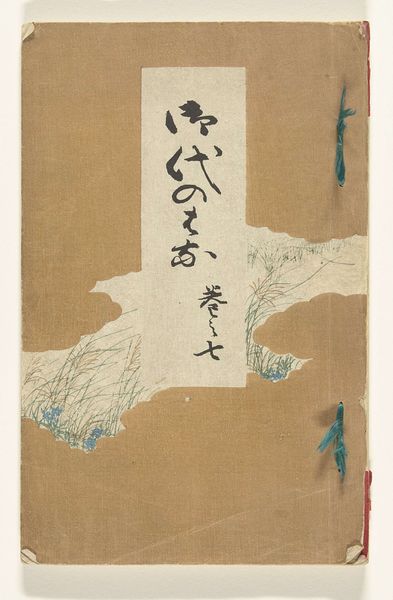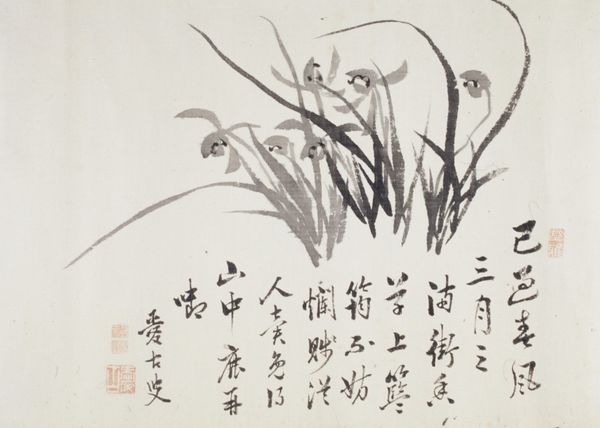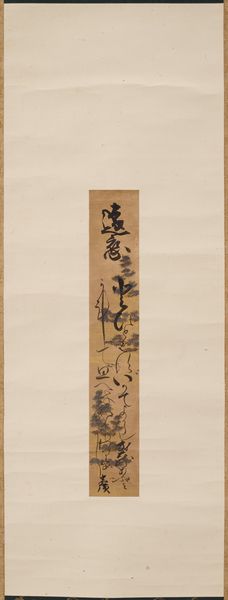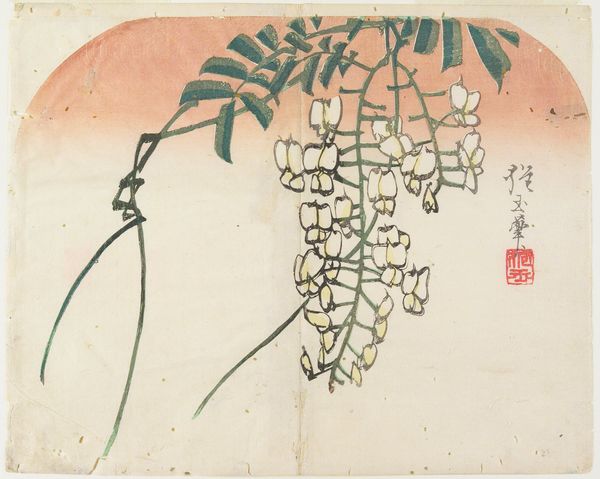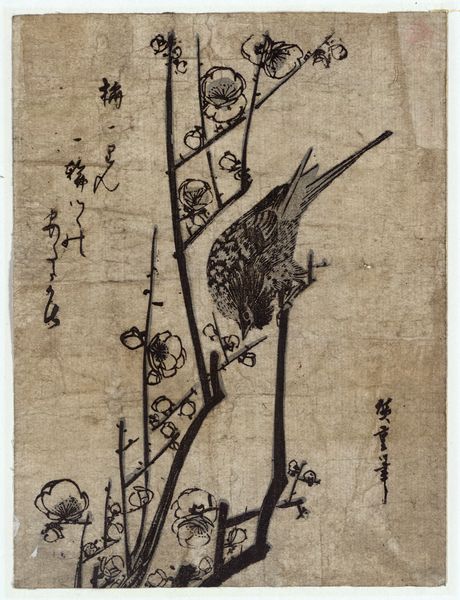
drawing, paper, ink
#
drawing
#
light pencil work
#
quirky sketch
#
pen sketch
#
asian-art
#
paper
#
personal sketchbook
#
ink
#
ink drawing experimentation
#
pen-ink sketch
#
line
#
pen work
#
sketchbook drawing
#
watercolour illustration
#
sketchbook art
Dimensions: height 249 mm, width 161 mm
Copyright: Rijks Museum: Open Domain
This page from 'Wereld der Kunsten' was created by Murase Gyokuden in the late 19th or early 20th century. It depicts stylized grasses, rendered with delicate lines and a muted palette. The grass motif in Japanese art extends far back, embodying themes of resilience and the transient nature of life. Think of Sesshū Tōyō's Zen landscapes, where similar reeds evoke a sense of meditative calm. What is striking is how Gyokuden simplifies the subject, reducing it to its essential lines. This abstraction is a powerful gesture, laden with cultural memory. The same motif appears in Chinese paintings, symbolizing humility and adaptability. Over time, the meaning of the motif has evolved. What was once associated with courtly gardens, now became a symbol of personal strength and flexibility, reflecting a deeper engagement with nature's subtle language. This enduring symbol engages us on a subconscious level, tapping into our collective memories of growth, decay, and renewal.
Comments
No comments
Be the first to comment and join the conversation on the ultimate creative platform.






